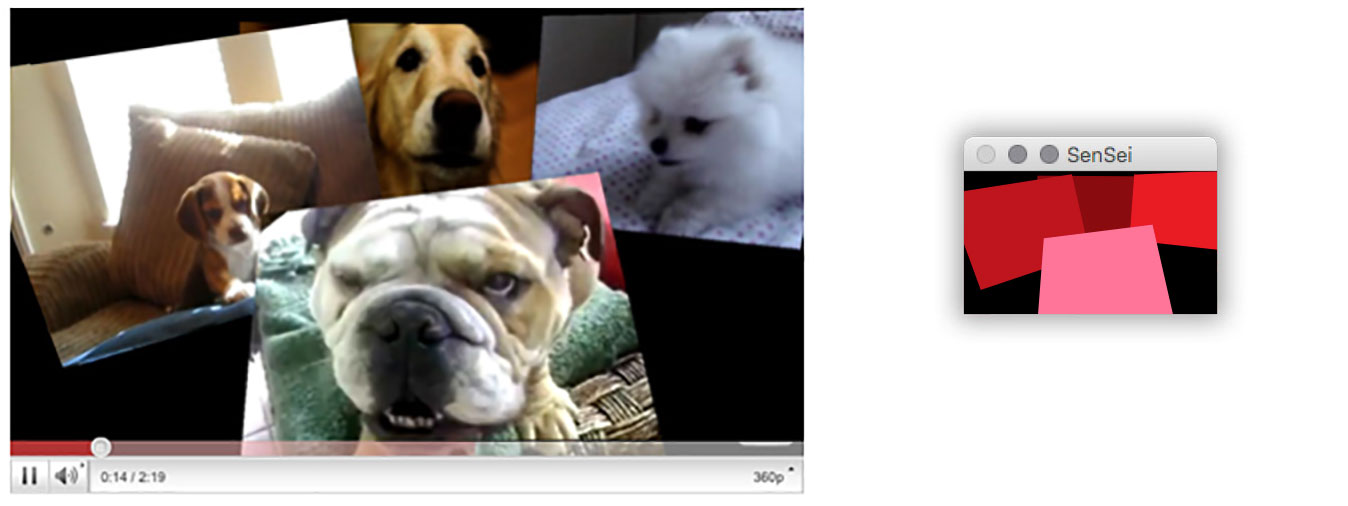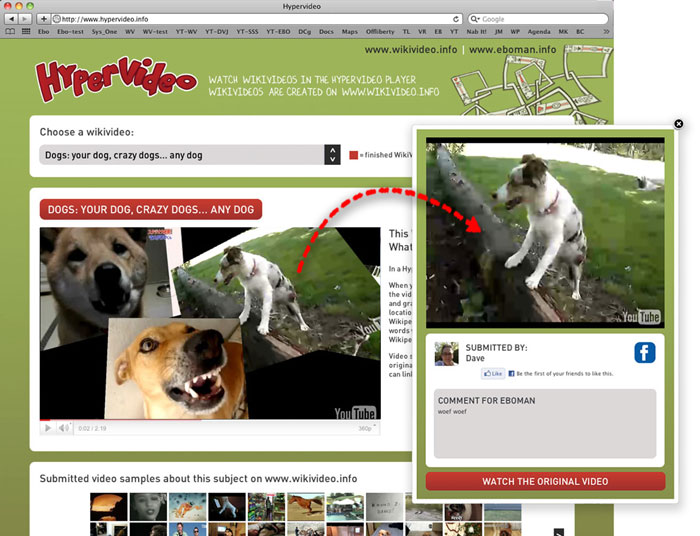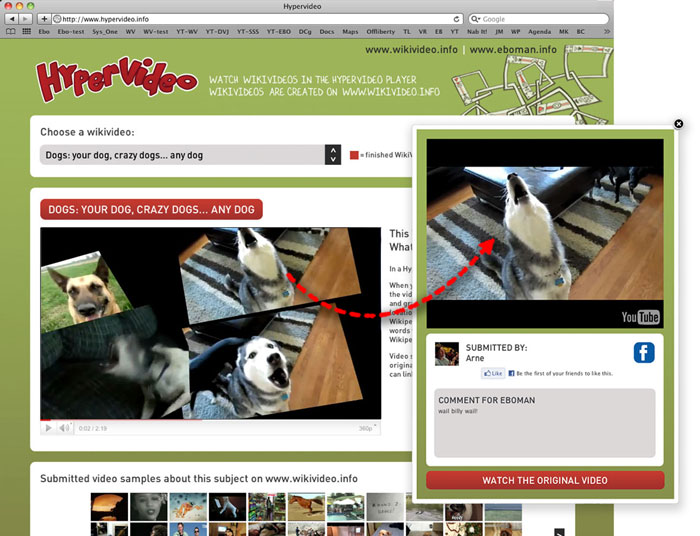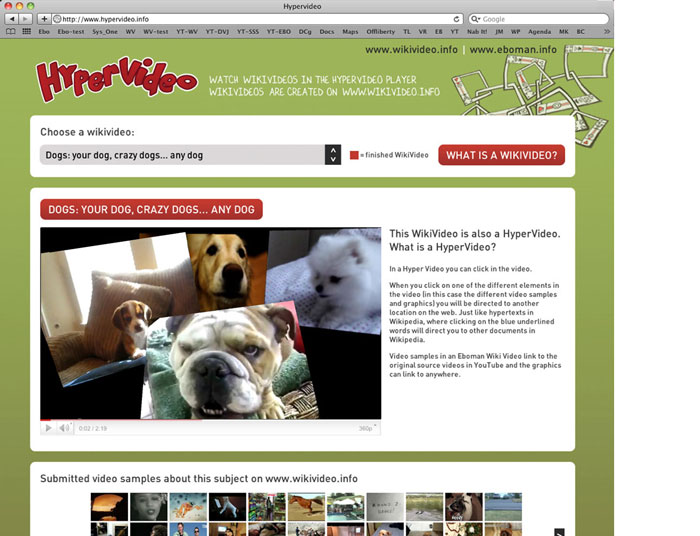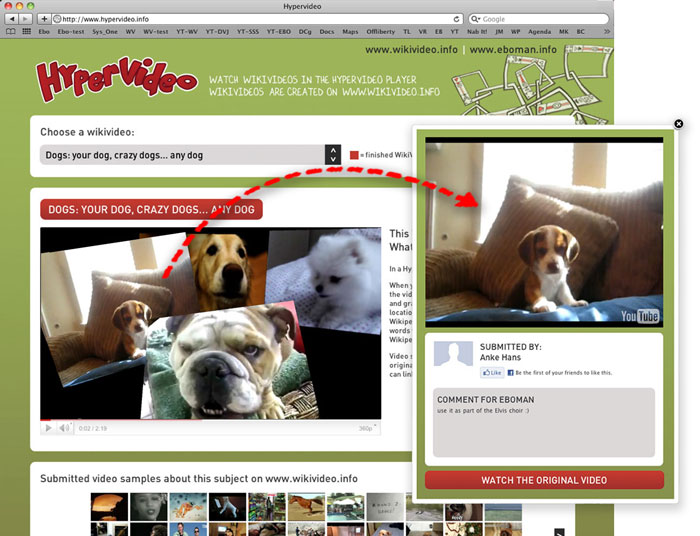With EboStudio I developed the HyperVideo Player in 2011. A HyperVideo is a video in which you can click on all elements in the video collage. Clicking on these elements (the video samples and the graphics) refers the user to other places on the internet.
How it works
We developed this player for the WikiVideo project initially. Clicking on a video sample automatically opens the original YouTube video from which the sample was taken. Graphics in a HyperVideo can refer (link) to all kinds of information, a text in Wikipedia, another HyperVideo, a playlist, a website, etc.
Clicking on a video sample in a HyperVideo also shows the Facebook profile of the person who submitted the video and the message he/she sent me. There is also a button that opens de original YouTube video, so you can see the whole video and understand the context of the video sample.
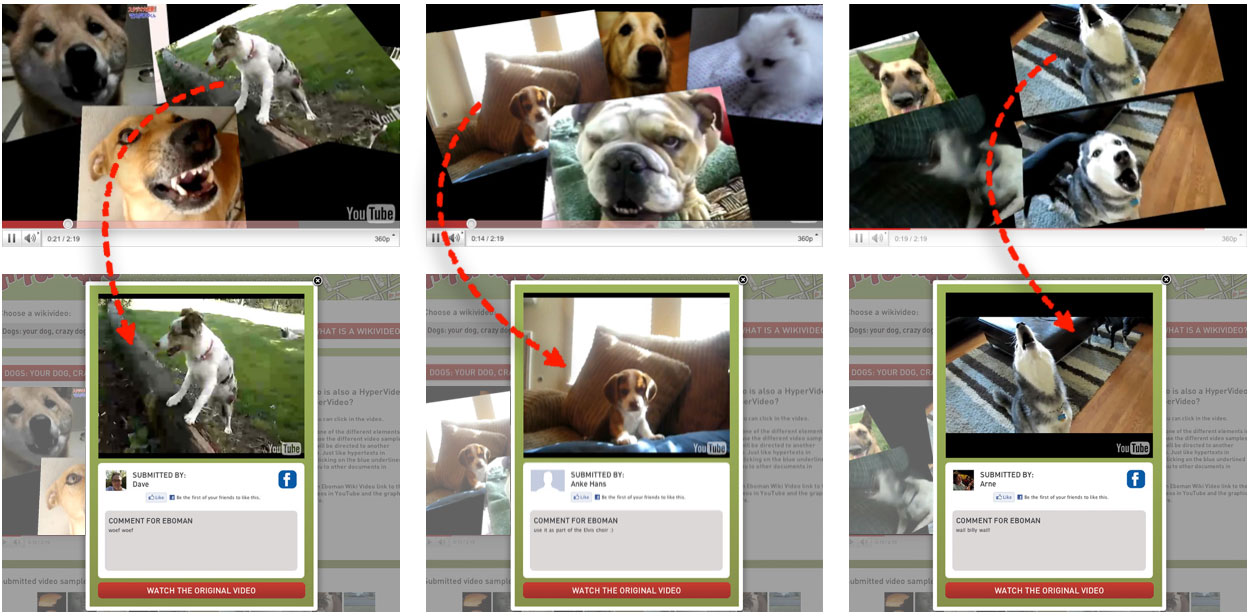
SenSei
We developed a special video player for the publication of these WikiVideos: the HyperVideo Player. A HyperVideo is a video in which you can click on all the different elements in the video collage. Clicking on these elements (in this case, the video samples and the graphics) refers the user to other places on the internet. Clicking on a video sample automatically opens the original YouTube video from which the sample was taken. Graphics in a WikiVideo can refer (link) to all kinds of information, a text in Wikipedia, another WikiVideo, a playlist, a website, etc.

AV compositions produced with SenSei can be published as ‘Hyper Videos’. A Hyper Video is a video in which you can click on all the different elements in the video collage (videos samples and graphics). Clicking on these elements refers the user on to other places on the internet (similar to Hyper Text for text). The Hyper XML Generator was used to create the hyper layer for the Hyper Video player.

To preview the hyper layer for the Hyper Video player, SenSei can run in ‘RenderHyper’ mode. When this mode is enabled SenSei’s output window will show all composition objects and their role in the hyper layer. The hyper layer uses a low resolution, so the RenderHyper output window is much smaller than the regular output window.
